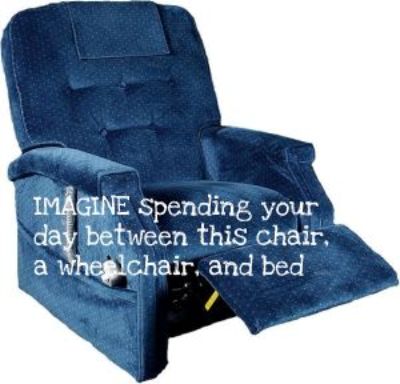 Set Matt Free Of RSD
Set Matt Free Of RSD 
Matt needs your help and prayers to overcome his Reflex Sympathetic Dystrophy nightmare.
MY STORY (continued)
Some of the ways in which my daily life has changed and the blessings that I receive from those around me.
Obviously, I cannot drive as my peers do. I rely on others to wheel me in my manual wheelchair. Or upon costly special buses which allow me to use my electric wheelchair. (Without a van of our own, our car cannot accommodate this chair.)
I can no longer go swimming in pools or at the beach due to the water temperature which had once brought me great joy. Even the sensation of a shower's water upon my skin is almost unbearable. -- I can no longer do Tae Kwon Do, which was once of great importance to me. I do not have the strength or ability to care any longer for lovebirds. I so enjoyed the sweet songs of the birds. Now, sadly enough, even the sounds of birds can cause pain to my ears, as with many noises. -- I can seldom physically endure leaving my house. -- Attendance at weekly and special masses brought great spiritual comfort to me. Even when I had to give up being an altar server and sit in my wheelchair. Now, I do not have the strength to even do that. -- Although earlier on in my RSD, I could still enjoy sharing a movie with others, in a theater, I can no longer tolerate sitting in my wheelchair for that long of a period of time, deal with the noise, tolerate the headaches, and stay focused. -- Unless
someone's house is wheelchair accessible, I can longer go visiting them, even if I am physically up to it. - I no longer feel safe eating or drinking by myself, because of difficulty in swallowing.
This photo is a reflection of happier times
 .
.
Before RSD, Matthew found much enjoyment in reading.
When his battle with RSD began, he found this quote and hung it by his chair, where he could reflect upon it, daily.
"I am still determined to
be cheerful and happy, in
whatever situation I may
be; for I have also
learned from experience
that the greater part of
our happiness or misery
depends upon our
dispositions, and not
upon our
circumstances."
Martha Washington
As for a quote at this time in his illness, Matthew says:
"If you could only see my insides and what I constantly endure, then you would understand why I desperately need to go to Germany for treatment."
What sustains Matt daily is his faith, family, friends, and many years of incredible TaeKwon Do training which taught him to 'Believe and you will achieve your goal!'
WHAT IS THIS 'KETAMINE COMA PROTOCOL'?
And, why is there a need to go to Germany?
In 1970, the FDA approved Ketamine as an anesthetic.
In general terms, it is also an inhibitor of NMDA receptors which are believed to regulate central pain neurons. RSD is believed to involve a gross malfunctioning of these receptors. Although other medications can impact NMDA receptors, ketamine has a high level of success in this area.
Ketamine is routinely used to help prevent RSD/ CRPS after some surgeries, so that a theory evolved regarding it's potential to help alleviate the pain of RSD/ CRPS.
Dr. Robert Schwartzman, one of Matthew's specialists, has been a pioneer in the use of the Ketamine Coma Protocol.
Dr. Schwartzman has referred dozens of his most ill patients to Germany. The results have been remarkable, overall. Approximately one-third of them have been pain-free for more than 5 years. Most others have been pain-free for lesser amounts of years.
The protocol involves the patient being in an induced coma for 5 days. They are given large doses of ketamine along with other medications. The procedure is risky. Yet, the German doctors and their staff monitor the patients extremely closely. -- After coming out of the coma, the patient is monitored. --The time spent in the hospital itself is approximately 4 weeks. Then, there is approximately 2 weeks of observation while the patient and their parent stay in the immediate area, at a local hotel. -- Upon return to the U.S., there is a frequent series of follow-up ketamine boosters given.
If this procedure works so well, then why is it not done here in the U.S.?
The answer rests in large part with the FDA. They will not allow induced comas for longer than 2 days. The other involves the tremendous start-up and on-going costs of operating a center for this procedure.
Good Morning America, Dec. 6, 2004, on the web, has an informative article discussing the Ketamine Coma Protocol.
Likewise, there are links available through the NIH (see our links page) which will take you to sites which not only discuss RSD/ CRPS, in general, but also the Ketamine Coma Protocol.
Please keep in mind, that Dr. Schwartzman only refers the most critical of his patients for this procedure. -- After evaluating the risks against his increasingly deteriorating condition, Matthew believes that hope for him lies with the Ketamine Coma Procedure, if he is to regain his life. The decision is ultimately his own. -- Matt needs your help. Please.
The following slideshow will perhaps give you a sense of what Matt's life has become.
Please wait while the images load on the screen, before it begins.
IMAGINE...
